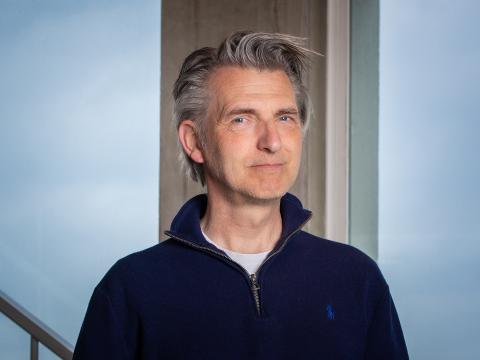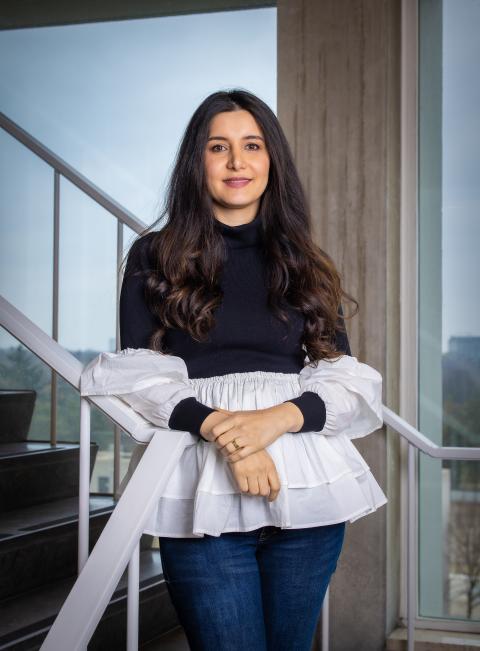Virtual child growth monitor
To detect malnourishment in time, researchers at the Zero Hunger Lab are working on an app that evaluates photos of children. As a bonus, this Child Growth Monitor collects data that is sorely lacking.
For Dutch parents it is a matter of course: if desired, professionals closely monitor the growth and development of your child from birth. Weighing and measuring are essential in this process. Because early detection of malnourishment – or rather obesity, a greater public health threat in rich countries – saves lives. That is why research is being conducted at Tilburg University in collaboration with German NGO Welthungerhilfe under the banner of the Zero Hunger Lab to detect malnourishment remotely, via an app. An algorithm can “see” from images whether a child is malnourished or at risk of malnourishment.
The Child Growth Monitor, as the app is called, can be thought of as a virtual detection of malnutrition. A prototype developed by Welthungerhilfe is already being used by professionals in the field. Ultimately, parents should be able to use the app themselves to send a picture to a medical team so that malnourishment can be detected and treated more quickly.

Among other things, we want to see if we can use deepfake technology to generate non-existent children with
varying body characteristics.Professor artificial intelligence Eric Postma
PhD student Hezha MohammedKhan and professor of artificial intelligence Eric Postma are working with Marleen Balvert, assistant professor of operations research, and Çiçek Güven, assistant professor of cognitive science & AI, on algorithms for detecting malnourishment from images or videos. They are developing a deep-learning system that estimates, among other things, children’s height, girth, and weight from a photograph. It sounds complicated – and it is, for starters because public data sets of children’s photos don’t exist, Postma says. “Collecting photos of half-naked children is a problem for understandable reasons, so we are looking for solutions to that. Among other things, we want to see if we can use deepfake technology to generate non-existent children with varying body characteristics. We can use those to train the AI systems.”
Avoidable cases
With an alternative data set, consisting of 3D scans of adult bodies, the team has already achieved promising results upon which it is now building. There is a partnership with pediatricians at the Elisabeth- TweeSteden Hospital in Tilburg. These doctors are enthusiastic about the idea and are sharing their thoughts on it, MohammedKhan says. “The next step in our research is to train our model on different datasets. The model needs hundreds of thousands of images to learn to recognize new images. We now have a dataset that is more varied from the previous one in terms of color, body shape, lighting, and distance from the camera. These are all aspects that contribute to how the algorithm works in practice. Eventually, our model will need to be tested on images of real children, but we’re not there yet.”
Text continues below photo.

240 million children are starving, and more than 3 million children die every year from malnourishment that could have been prevented by early detection. These are outdated figures, as less can be measured in the field during covid. Moreover, the pandemic will significantly increase this number.
Not only can the app save millions of lives, but it can also collect data in the field that is now sorely lacking, MohammedKhan says. “The current method for remote areas, for example, is to estimate how much malnourishment there is, because recent data is often unavailable. People know that there are millions of malnourished children, but not always exactly where they are. The app meets this need as well. It generates data that can be used to deploy food aid much more effectively.”

If you haven’t had any education, it’s very difficult to know if your child is healthy and what good nutrition is
PhD-student Hezha MohammedKhan
Human in the loop
MohammedKhan is a mother of a little boy of one and a half. She has also been committed to various humanitarian initiatives since childhood. In addition, she is an active speaker – including giving TEDx Talks – in the areas of war, poverty, and minority empowerment. She grew up during a period of war and occupation and suffered hunger as a child.
This is partly why she is so passionate about her work, she says. “Working at the Zero Hunger Lab is a perfect fit for me. I want to dedicate my life and career to societies like the one I come from, Iraqi Kurdistan, which lacks just about everything. The impact of this project is huge; I say that as a mother, too. In the Netherlands, my child is being monitored and I am incredibly grateful for the confirmation that he is growing well and is healthy. And I’m highly educated. If you haven’t had any education, it’s very difficult to know if your child is healthy and what good nutrition is.”
Postma emphasizes that the monitor should be seen as a tool; not as something that will replace people. “Recognizing a specific pattern is typically something in which a powerful machine is superior to a human because, for example, it never gets tired. But a machine understands nothing of our world and doesn’t look at it as a human does. That’s the big difference between artificial and natural intelligence. They complement each other and that’s why there should always be a human in the loop who understands the context.”
Text: Mirna van Dijk
Photo: Maaike Putman
Date of publication: 15 September 2022
